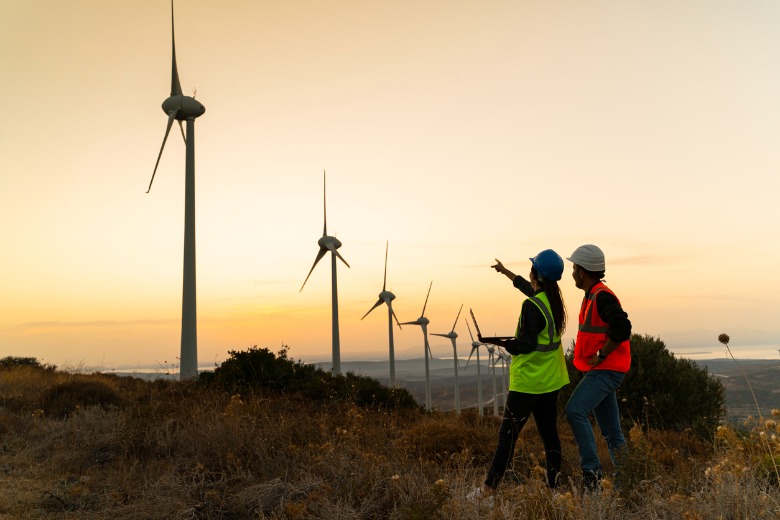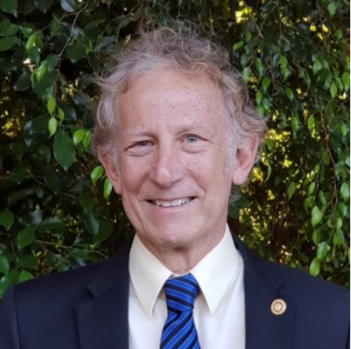
Local government can lead the push to boost jobs and improve climate outcomes with renewables industry collaboration, writes Rick McElhinney.

The need to power Australia with reliable green energy is intensifying and big-picture thinking is key for local government authorities to collaborate successfully with the renewables sector.
If councils are to boost jobs, create legacy infrastructure and keep the lights on for generations to come, an open mind, willingness to listen to proponents and a desire to embrace change for the betterment of their regions are vital.
Working with renewable energy providers can be a new frontier for local government, so reframing traditional thoughts and processes is an important first step.
Flexibility to meet challenges
Renewable energy, the way it interfaces with the energy grid and how it benefits LGAs and residents is a departure from the usual roads, rates and rubbish roles that councils play.
There are no easy mechanisms for collaboration, including in the Local Government Act (2009) and other regulations.
Sunshine Hydro’s AUD$2.5b Djandori Gung-i (Flavian) Superhybrid project, in development outside Miriam Vale in Central Queensland, requires a long pipeline from the Gladstone Regional Council (GRC) desalination plant to our power plant.
At present neither legislation nor the council’s own processes exist for us to do that together – but both parties are working on a solution. We need the infrastructure to operate, and the council would gain ownership of it and income from charging us to use it.
Solutions to this type of challenge could potentially be through joint venture, private-public partnership, or some other mechanism.
With large-scale renewable projects, approval pathways can be long, complex, and often out of council hands. There is a real need to explore how processes at other levels of government could work on a local level.
A sense of urgency to work together to decarbonise without curbing community benefit is key. Investigating pathways through council processes can reduce approval time, in some cases, by several years.
If we don’t have the frameworks to make a difference together, we have to create them.
A future view
Many regional Australian local governments have a traditional industrial, fossil-fuel employment base, and there is concern about the inevitable energy transition and how this will impact communities.
Energy can attract business to a community – if the right infrastructure is in place.
Understanding the quantity of demand that is coming is vital, too. In Gladstone, for example, they expect energy demand to triple, and that’s likely to be duplicated worldwide.
In the broader picture, all Southeast Queensland LGAs are looking to use green energy for the Olympics in 2032, so there is a wider imperative for them to come on board in the next decade.
Anticipate opposition, involve everyone
Only one in 10 or, in some cases, one in 20 large-scale renewables projects of all stripes ever get up, so unfortunatelyc ouncils are used to disappointment and new projects can be met with cynicism.
It’s vital for councils to work with proponents to ensure these future developments will not result in a ‘boom-bust’ scenario, as has been the case with some fossil fuels.
All stakeholders must be involved. Including schools, tertiary institutions, traditional owners, land custodians and other community groups can help limit push-back and build genuine excitement for projects.
Act with urgency for a long legacy
So how do we leave a lasting benefit at a local level? The opposite of fly-in, fly-out.
The win for local governments comes from looking at the green energy revolution through the prism of the future, collaborating with sustainable industry from a project’s early days to production and beyond.
Councils should know these projects can also create associated green industrial hubs, where other industries can grow in green energy’s wake. Perhaps these regions could become producers of ‘green’ steel? This will be a long-term win for regional Australia.
We have a decade to get sustainable projects working, not a decade to just decide if it’s a good idea. If we want to avoid the catastrophic effects of global warming, we need fresh approaches and swift decision-making now.
Local governments have a long-term and vital role in allowing visionary companies to build strong industry, securing reliable, renewable energy and ensuring the overall futures of their communities.
*Rick McElhinney is CEO of Sunshine Hydro
Comment below to have your say on this story.
If you have a news story or tip-off, get in touch at editorial@governmentnews.com.au.
Sign up to the Government News newsletter